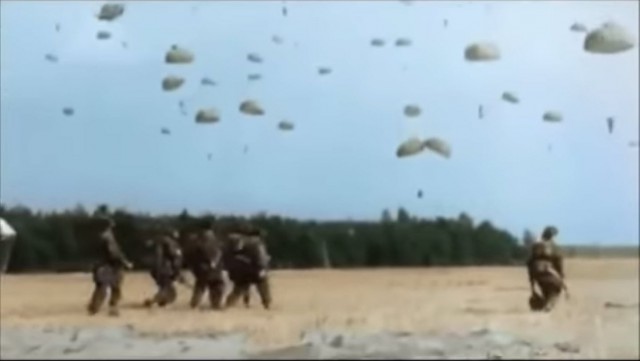Operation Market Garden was the plan by Field Marshal Montgomery to outflank the German fortified Siegfried line by going through The Netherlands.
The Netherlands is bisected by rivers so to make any progress the bridges had to be secured, the task of the Paratroopers, so the ground forces, the British XXXcorps in this case, could race across.
The Market part was to be the largest Airborne operation to date, fully three divisions and a brigade were to be flown in and dropped behind enemy lines. They were to secure numerous bridges, towns and stretches of road for the ground forces.
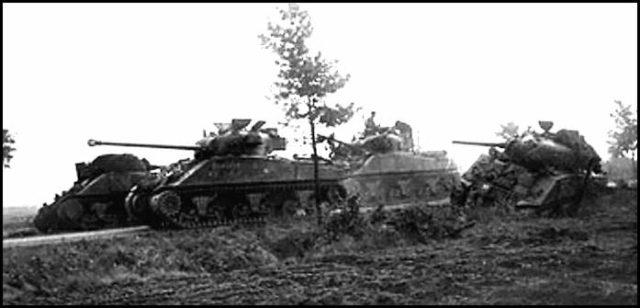
Unfortunately for the Allies, this plan stretched the available resources, mainly planes, well beyond the limit and Market Garden became a plan of compromises. Of each division participating, the U.S. 101st and 82nd Airborne, the British 1st Airborne only a part of the forces could be landed on the first day. The Polish Parachute Brigade wasn’t even scheduled to land until the third day.
This meant all divisions were to take their objectives while being understrength and with the added responsibility of guarding the drop zones for subsequent lifts. The difficulties this caused were most apparent for the British 1st Airborne Division at Arnhem; they were not only furthest away from the Allied lines, but they also landed furthest from their objectives.
A large part of the plan depended not only on the speed of the Allied paratroopers and glider men but also on the inability of the Germans to respond quickly and in strength. It was assumed that the German forces would not be able to recover from their defeat in Normandy and subsequent withdrawal through France and Belgium.
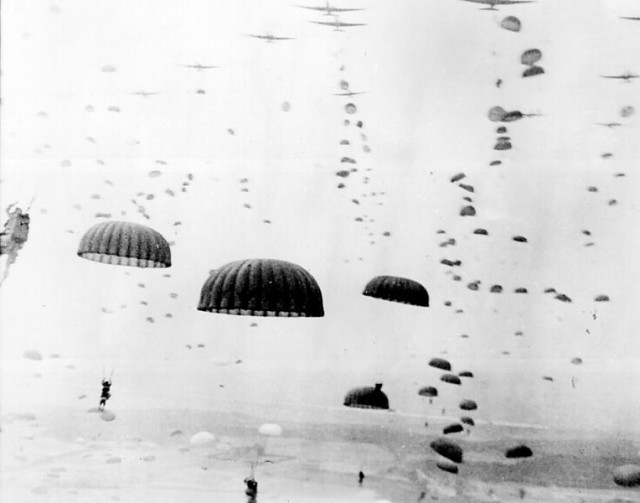
Unfortunately for the Allies, the “miracle in the West” took place and in a matter of days the Germans went from “on the run” to forming a strong defensive line facing XXXcorps on their start line. On top of that, the Germans placed the remains of two SS Panzer Division, understrength but still very potent, near Arnhem, the goal of the operation.
Operation Market Garden began on September 17th, 1944 and quickly the Allies ran into trouble. XXXcorps had difficulty breaking through the German lines and came nowhere near their objective of the first day, the city of Eindhoven.
For the Airborne forces, the day ended with most but not all objectives secured. Near Eindhoven, the 101st Airborne Division saw the bridge at Son being blown in their face making it impossible for them to secure Eindhoven.
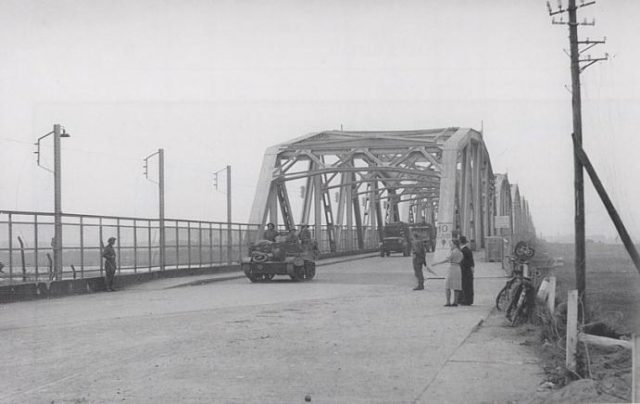
At Nijmegen the 82nd Airborne Division was able to take the massive bridge over the Maas near Grave (called Gravey by the paratroopers for obvious reasons) quickly and intact but the road or rail bridges at Nijmegen across the Waal river were not taken.
At Arnhem, the Paratroopers from the 2nd Battalion managed to take the northern end of the road bridge across the Rhine. The rest of the division was either held up by unexpectedly strong German resistance or had to secure the drop zones for subsequent lifts.
Things quickly went downhill from there, fog in England meant the reinforcements were not able to take off on schedule and thus landed hours later than planned, limiting the options for the divisions already on the ground. The American divisions didn’t reach their full strength until six days into the operation.
It took another full day for the ground forces to pound their way into Eindhoven and then the bridge at Son had to be repaired. On September 19th the ground forces were able to resume the advance on Arnhem again, but according to the original schedule, they should have been in Arnhem by now.
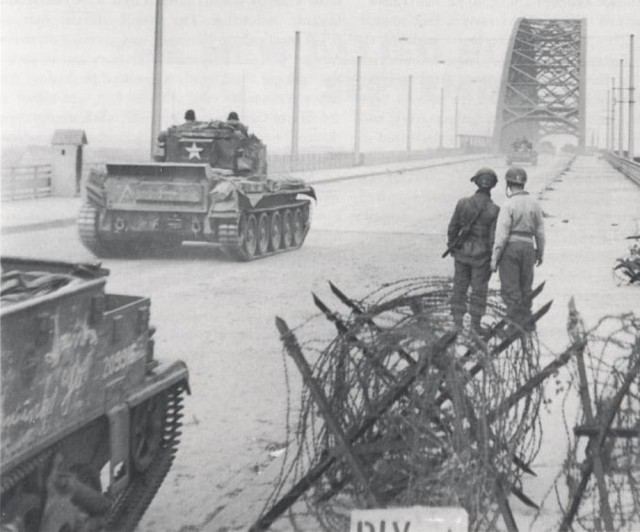
They arrived in Nijmegen after only a couple of hours, linking up with the 82nd Airborne but they were not able to take the bridges that day. On September 20th, in a combined assault of both paratroopers and ground forces the bridges were finally captured. That attack included a heroic river crossing in canvas boats in broad daylight by paratroopers from the 504th Parachute Infantry Regiment.
Unfortunately, the Allies were unable to take immediate advantage of this, and no drive on Arnhem was resumed until the afternoon of the next day. By then it was too late.
At Arnhem, events had quickly moved from optimistic to catastrophic; the Germans were trained in anti-parachute operations and quickly put up a number of defensive lines which the lightly armed Paratroopers were ill-equipped to defeat. The tanks and armored cars that the Germans quickly moved to Arnhem swung the balance into their favor, and no other troops were able to reach the Bridge at Arnhem.
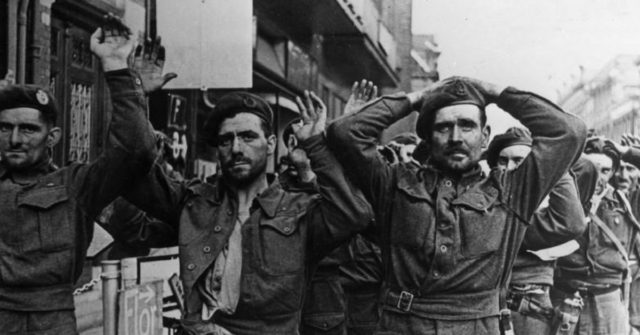
In 3 days of savage fighting in increasingly desperate attempts to reach the bridge, the 1st Airborne Division virtually ceased to exist, and the remains pulled back to the small village of Oosterbeek, hoping the ground forces of XXXcorps would link up with them.
At the bridge across the Rhine the North end as firmly in the hands of the British, but the Germans brought ever increasing numbers of troops, tanks and artillery to bear. After three days and four nights, without reinforcement and out of ammunition, food, water and bandaged they were forced to surrender.
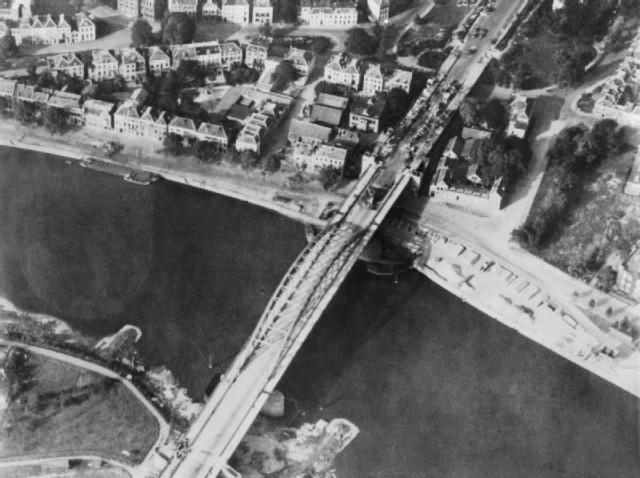
During the remainder of the operation, the Allies desperately tried to link up with the British and Polish forces fighting at Oosterbeek. But when the Germans launched successful counter attacks that cut the road leading to Arnhem for days on end, it was decided to pull the remainder of the 1st Airborne Division back across the Rhine.
Operation Market Garden was a costly failure for the Allies, a large portion of the Netherlands was liberated, but the Rhine river remained an obstacle till March of 1945 when it was finally crossed. Not at Arnhem but further to the east in Germany.
Video
A number of cameramen were attached to the forces in Operation Market Garden, their footage has been colorized and gives an amazing overview of the battle.
